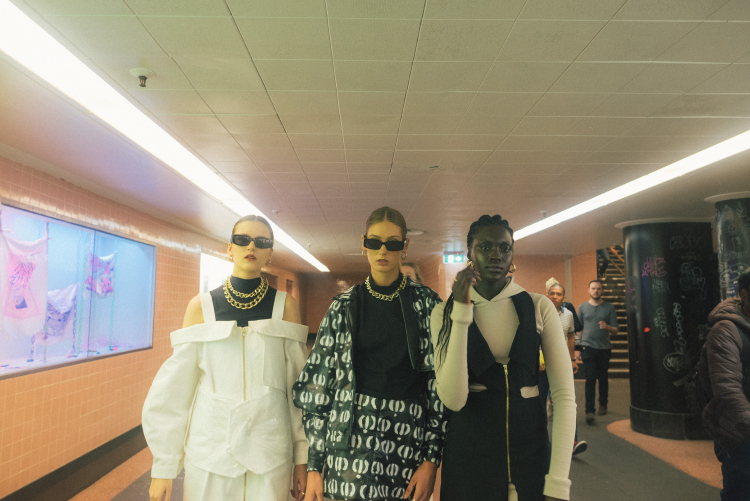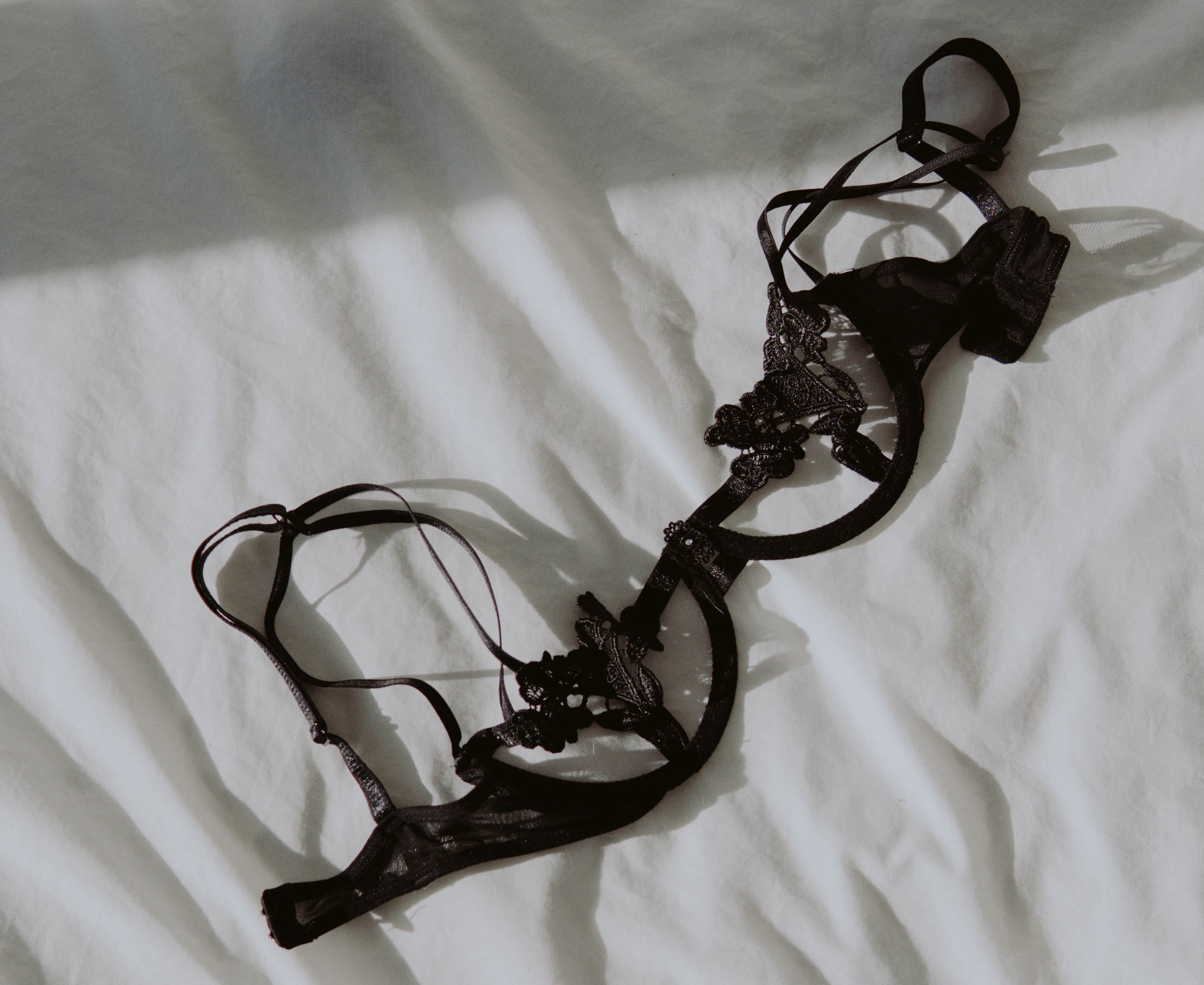The Revolution Behind the Personal Style Journey

Recent trends on TikTok have sparked discussion among online communities about the gender politics of dress and the potential for revolution hiding in our closets. One before/after-style TikTok trend uses the prompt “POV [point of view]: you stopped dressing for the male gaze,” and encourages users to spotlight their personal style journey as they decentered patriarchal expectations of appropriateness and attractiveness. However, Internet dwellers quickly highlighted the catch-22 present in idealizing dress that seemingly shuns the male eye. While praising baggy or untraditional fashion choices, people were quick to shame revealing and form-fitting clothing. This resulted in an additional form of restriction: if you want to claim that you’re free, you can’t be seen in form-fitting wear.
In considering the complex socio-political motivations that surround our daily dress, we have to think about societal expectations, what freedom looks like, and the luxury of choice. Can we wear form fitting clothing and still claim to have successfully escaped the male gaze? Do we really have the ability to choose to evade the male gaze when we’re submerged in a society that’s based on patriarchal structures? While I don’t have all the answers, I’ve crawled the Internet to better understand these trends, and I’ve reflected with friends on motivations of dress to better understand how women feel the male gaze fits into their personal style evolution.
The Nouveau Madonna/Whore Complex
In considering the relationship between dress and the male gaze, I often think about Billie Eilish and her notable personal style journey. The 21-year-old singer shocked fans and wider audiences alike with a 2021 Vogue cover that launched her newest “album era.” Her mode of dress in the cover shoot, which featured a form-fitting corset and sheer skirt, was a major departure from her traditional all-baggy-everything style, and Vogue’s Instagram post of the cover became the fastest Instagram post to reach 1 million likes, in just six minutes.
In conversation with British Vogue, Billie preempted the negative responses she knew she would receive for revealing more skin than usual. “Don’t make me not a role model because you’re turned on by me,” she stated. With that, Billie raised the complex concept of whether you can wear conventionally ‘attractive’ clothing without conforming to patriarchal standards. Her comments highlighted a new form of madonna/whore complex that has been increasingly perpetuated online. Either you dress in a way that is socially unattractive, therefore “freeing” yourself from the patriarchy, or you’re a hypocrite and no longer worthy of praise if you don’t.
Deciphering the Male Gaze – A World Without Men
Image Credit: Mathilde Langevine / Unsplash
As this conversation continues to unfold online, fashion communicator and stylist Afaf Zahira weighed in with her thoughts about how wearing lingerie for yourself can be an empowering, confidence-boosting act. “I always get comments about how we’re being brainwashed by the male gaze,” she states. “The way I like to think about it is if I was in a world with all women, what would I still do and not do? I would still wear this…if anything, I think I would dress more naked.”
Zahira raises a significant point about how we would dress in a world without the male gaze. As a lesbian woman who is presently a student in a largely female-run degree program, I am probably the closest a person can get to that experience. I owe nothing to men, and my daily motivation of dress revolves around what will make me feel the most comfortable and content. As I think back to times when I felt significant pressure to conform to societal structures—such as in high school and just starting out in the workplace—the need to constantly weigh what clothing allowed me to fit in was burdensome and distracting. Now, other people’s expectations of how I’ll be dressed is the absolute last thing on my mind.
Who Gets to Choose?
Image Credit: Annie Spratt / Unsplash
Nonetheless, as we consider the male gaze and our ability to tailor our dress toward or away from it, we must acknowledge that not everyone has the unfettered ability to choose. When we’re in school, our choices are often limited by the patriarchal dress code — bottoms no shorter than three inches above the knee, shoulders covered, no bra straps visible–the list goes on and on. In the workplace, we’re confined rather by appropriateness and the parallel patriarchal forces driving the concept. Those who aren’t sitting on a stockpile of money often have to curtail themselves to those rules of appropriateness.
Kayla Barber, who has a career in American politics including stints in the US Senate, stated: “It’s really clear walking through the halls in Russell or Hart [the office buildings of Congress members] that there are silent messages being sent to women staffers about how they should dress.” She notes that there are plenty of people who have distinctive and interesting senses of personal style in the off hours, but that they often blend right back in in the workplace. “For me, I do ensure that my dress is modest, but I’m not going to buy new clothes just to fit in at the office.”
For Kayla, her job requires long hours and creativity—best undertaken when she feels comfortable and confident. That means she’s throwing other people’s expectations for how she should dress out the window, while focusing instead on doing her job and wearing what makes her feel the best equipped to do so. That said, she notes that recent publication referred to her as “a campaign volunteer,” rather than a senior member of leadership on her Senator’s team, in the caption of a photo taken at a campaign event. This may have had something to do with her choice to wear vintage Levi jeans, a t-shirt, and a blazer. Indeed, personal choices to prioritize comfort and confidence can have social or professional ramifications.
Billie reminds us of something she discovered in her journey to self-discovery in lyrics that accompanied her new look – “If I wear more, if I wear less, who decides what that makes me? . . . Or is your opinion of me not my responsibility?” As we acknowledge the privilege of choice, we should all take a page from Billie’s book – by harnessing the power in dressing to ask the question “what will make me feel my best?” rather than “what should I wear today?” every morning.









